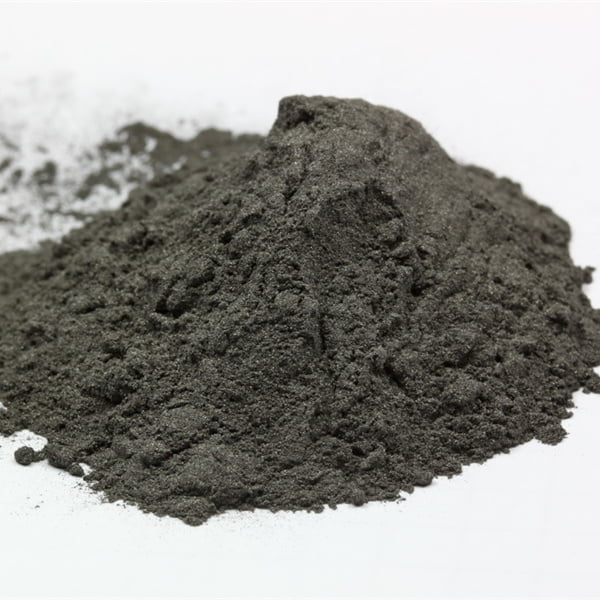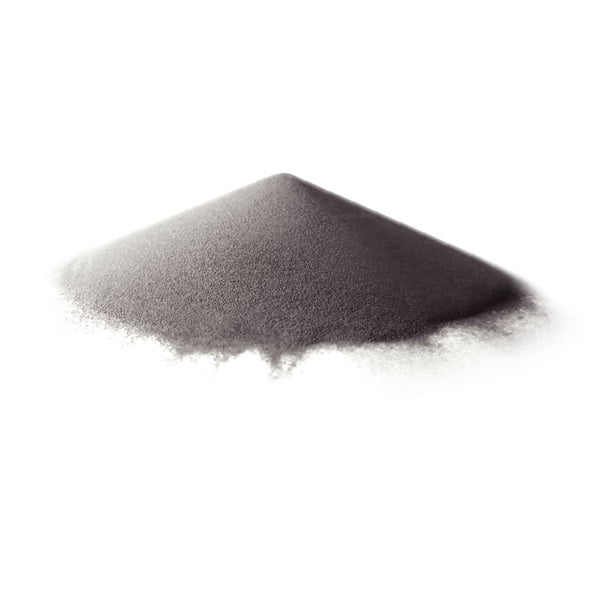Tungsten Powder Guide
Table of Contents
Tungsten powder is a versatile material with a wide range of applications across numerous industries. This powder form of tungsten possesses unique properties that make it suitable for uses ranging from light bulb filaments to radiation shielding.
Overview of Tungsten Powder
Tungsten powder typically refers to tungsten that has been processed into a fine particulate form through techniques like hydrogen reduction or chemical vapor deposition. The powder particles are usually under 1 micron in size.
Some key details about tungsten powder:
- Composition – Nearly pure elemental tungsten, sometimes with small amounts of oxide
- Production methods – Milling, hydrogen reduction, chemical vapor deposition
- Particle sizes – Ranging from 0.5 microns to over 10 microns
- Purity levels – From 99% up to 99.995% tungsten
- Key properties – High density, strength, hardness, heat resistance, electrical conductivity
- Main applications – Components, electrodes, thermocouples, counterweights, radiation shielding
Tungsten’s exceptional properties like temperature resistance and density make tungsten powder invaluable for numerous industrial uses.

Types of Tungsten Powder
There are a few main types of tungsten powder categorized by production method, particle size, chemistry, and other attributes:
| Type | Description |
|---|---|
| Milled powder | Particles created by ball milling tungsten metal into a powder form |
| Hydrogen reduced | Powder produced by reacting tungsten oxide with hydrogen at high heat |
| Chemically produced | Tungsten powder formed through chemical reactions and precipitation |
| Nanopowder | Ultrafine particles under 100 nm created through special processes |
| Alloy powder | Tungsten alloyed with other elements like copper or nickel |
These various tungsten powders are suited for different applications based on their exact composition and particle morphologies. Custom formulations are also produced to meet application-specific requirements.
Composition of Tungsten Powder
Tungsten powder is composed almost entirely of elemental tungsten metal particles. These particles may have trace amounts of oxides depending on the production process.
Here are some typical compositions:
| Component | Weight % |
|---|---|
| Tungsten (W) | 99% to 99.995% |
| Tungsten Trioxide (WO3) | 0% to 1% |
| Other oxides | 0% to 0.5% |
High purity grades contain 99.95% tungsten or more. Impurities are typically less than 0.01% from elements like carbon, nitrogen, oxygen. Achieving ultra high purity levels ensures the powder performs optimally for critical applications.
Key Properties of Tungsten Powder
Tungsten powder possesses exceptional properties that make it suitable for high performance parts and components across every industry:
| Property | Description |
|---|---|
| Density | Around 19 g/cc, making it extremely dense and heavy for its volume |
| Strength | Very high strength, hardness, and wear resistance even at high temperatures |
| Melting point | Extremely high melting point of 3422°C, highest among metals |
| Thermal properties | Low thermal expansion and excellent thermal conductivity |
| Electrical conductivity | Highly electrically conductive, used for contacts and electrodes |
| Chemical resistance | Resistant to acids, bases, and corrosion |
Tungsten demonstrates unparalleled performance capabilities under demanding environments. These attributes enable diverse functions in applications like lighting, welding, electronics, aerospace, medical devices and more.
Applications and Uses of Tungsten Powder
Tungsten powder finds use across virtually every industry sector due to its versatile properties. Some major application categories include:
Electrical and Electronics
- Heating elements for furnaces, kilns, heaters
- Filaments for lamps, tubes, and light bulbs
- Electrodes for electrical discharge machining
- Conductive contacts in switches, relays, connectors
- Thermocouples due to thermal conductivity
- Copper tungsten electrodes for arc welding
Industrial and Manufacturing
- Radiation shielding components
- Ballast weights for aerospace and automotive
- Balance weights for motorsports vehicles
- Vibratory feeder weights in material handling systems
- Counterweights in oil and gas drilling equipment
Chemical and Metallurgy
- Alloying agent in steel and superalloy production
- Crucibles, trays, and containers for molten metals
- Rocket engine nozzles resistant to extreme heat
Technology and Research
- X-ray tubes and radiofrequency shielding
- Vacuum tube elements
- Magnetron cathode/anode for microwave ovens
- Scintillation detectors in medical imaging
These represent some of the major uses of tungsten powder, but new innovative applications continue to emerge thanks to ongoing research and development.
Specifications of Tungsten Powder
Tungsten powder is produced according to strict specifications to ensure suitability for its intended functions. Here are some of the key parameters:
Particle Size Distribution
Tungsten powder is classified into different size grades based on the particle diameter:
| Grade | Particle Size – Microns |
|---|---|
| Coarse | 1 to 10 |
| Medium | 0.5 to 1 |
| Fine | 0.1 to 0.5 |
| Very fine | Under 0.1 |
| Nanoscale | Under 0.01 |
Narrow distributions with uniform particle sizes are important for pressing into shapes and sintering into dense parts. Ultrafine and nano powders allow great precision and detailed features.
Powder Purity Levels
Tungsten powder is available in different purity levels depending on the level of impurities:
| Grade | Tungsten Purity – % |
|---|---|
| Standard | 99% to 99.9% |
| High purity | 99.9% to 99.95% |
| Ultra high purity | 99.95% to 99.999% |
Higher tungsten purity reduces contamination during high temperature applications. Mission critical uses require 99.999% ultra high purity grades.
Density Specifications
Tungsten powder types have standardized density levels:
| Grade | Density – g/cc |
|---|---|
| Pure tungsten | 19.25 |
| 1% thoriated | 18.5 to 19.0 |
| 2% thoriated | 18.0 to 18.5 |
Small percentages of thorium or other alloying elements are added to tailor properties like better welding or emission characteristics.
Global Suppliers and Pricing
China is the dominant producer of tungsten powder globally, accounting for over 80% of world supply. Here are some of the major manufacturers:
| Company | Location |
|---|---|
| Xiamen Tungsten | China |
| JX Nippon Mining & Metals | Japan |
| H.C. Starck | Germany |
| Midwest Tungsten | USA |
| Kennametal | USA |
Tungsten powder pricing varies based on purity, particle size, quantity, and geographical region:
| Grade | Price – USD per kg |
|---|---|
| 99.5% coarse powder | $30 to $60 |
| 99.95% fine powder | $80 to $150 |
| 99.999% ultrafine powder | $800 to $2000 |
Prices tend to be higher for smaller particle sizes and higher purity levels. Small lab quantities under a kilogram have higher per kg pricing as well.
Comparing Tungsten Powder Types
With so many varieties of tungsten powder available, it helps to compare their pros and cons when selecting material for an application:
| Parameter | Milled Powder | Hydrogen Reduced | Chemically Produced |
|---|---|---|---|
| Purity | Moderate | High | Ultrahigh |
| Oxygen content | Higher | Lower | Extremely low |
| Particle shape | Irregular, angular | Rounded | Rounded, smooth |
| Size distribution | Wider range | Narrower | Tight distribution |
| Cost | Lower | Moderate | Higher |
| Performance | Good | Better | Best |
Milled powder has lower costs but wider variation in particle sizes and shapes. Chemically produced powder offers superior consistency and purity despite higher prices.
Advantages and Limitations
Some notable advantages and limitations when working with tungsten powder include:
Advantages
- Extreme hardness, heat and wear resistance
- Heavy density for weighting applications
- Alloying agent that greatly strengthens metals
- High temperature stability as filament material
Limitations
- Brittle unless alloyed with other materials
- Difficult to machine tungsten into final parts
- Higher costs than substitutes like lead or steel
- Powder surface oxidation can affect performance
Understanding these factors helps determine optimal applications for exploiting the benefits of tungsten powder while avoiding any weaknesses.

FAQ
Here are answers to some common questions about tungsten powder:
Q: Does tungsten powder pose any health or safety risks?
A: Like any fine particulate, it should not be inhaled. Appropriate ventilation, respiratory protection, and safe handling methods are recommended when working with tungsten powder. No other major health issues are associated with the inert material.
Q: What is the difference between tungsten and tungsten carbide powder?
A: Tungsten metal powder contains only elemental tungsten while tungsten carbide powder has both tungsten and carbon. Carbide grades offer greater hardness for applications like cutting tools.
Q: How is tungsten powder made into end-use components and products?
A: Compacting and sintering are the main methods. Powder metallurgy involves pressing the powder into molds to form green parts, then sintering them at high temperature to produce dense final shapes.
Q: Can tungsten powder be 3D printed?
A: Yes, research is ongoing into additive manufacturing of tungsten using specialized powder bed fusion printing processes to create complex geometries not feasible by other production methods.
Q: What is the difference between tungsten metal versus tungsten ore concentrates?
A: Tungsten concentrate refers to partially processed tungsten ore containing chemical compounds like tungsten oxide. Tungsten metal powder has undergone full reduction and refinement into elemental tungsten usable for industrial applications.
Conclusion
With its status as the metal with the highest melting point and an exceptional density, tungsten powder offers engineering capabilities that extend far beyond most other materials. Today, tungsten powder drives performance in applications ranging from light bulb wires to radiation shielding on the International Space Station. Yet many more innovative uses continue to be uncovered as researchers learn how to best leverage tungsten’s portfolio of properties.
By understanding the various powder types, compositions, production methods, and specifications, designers can select the optimal grade to take advantage of tungsten’s strengths while avoiding any weaknesses. Global supply chains provide the ability to source high quality material from qualified producers that conform to any number of international standards. With ongoing research and development, tungsten powder is destined to become an indispensible material across even more industries in the future.
Share On
MET3DP Technology Co., LTD is a leading provider of additive manufacturing solutions headquartered in Qingdao, China. Our company specializes in 3D printing equipment and high-performance metal powders for industrial applications.
Inquiry to get best price and customized Solution for your business!
Related Articles
About Met3DP
Recent Update
Our Product
CONTACT US
Any questions? Send us message now! We’ll serve your request with a whole team after receiving your message.

Metal Powders for 3D Printing and Additive Manufacturing
COMPANY
PRODUCT
cONTACT INFO
- Qingdao City, Shandong, China
- [email protected]
- [email protected]
- +86 19116340731
















